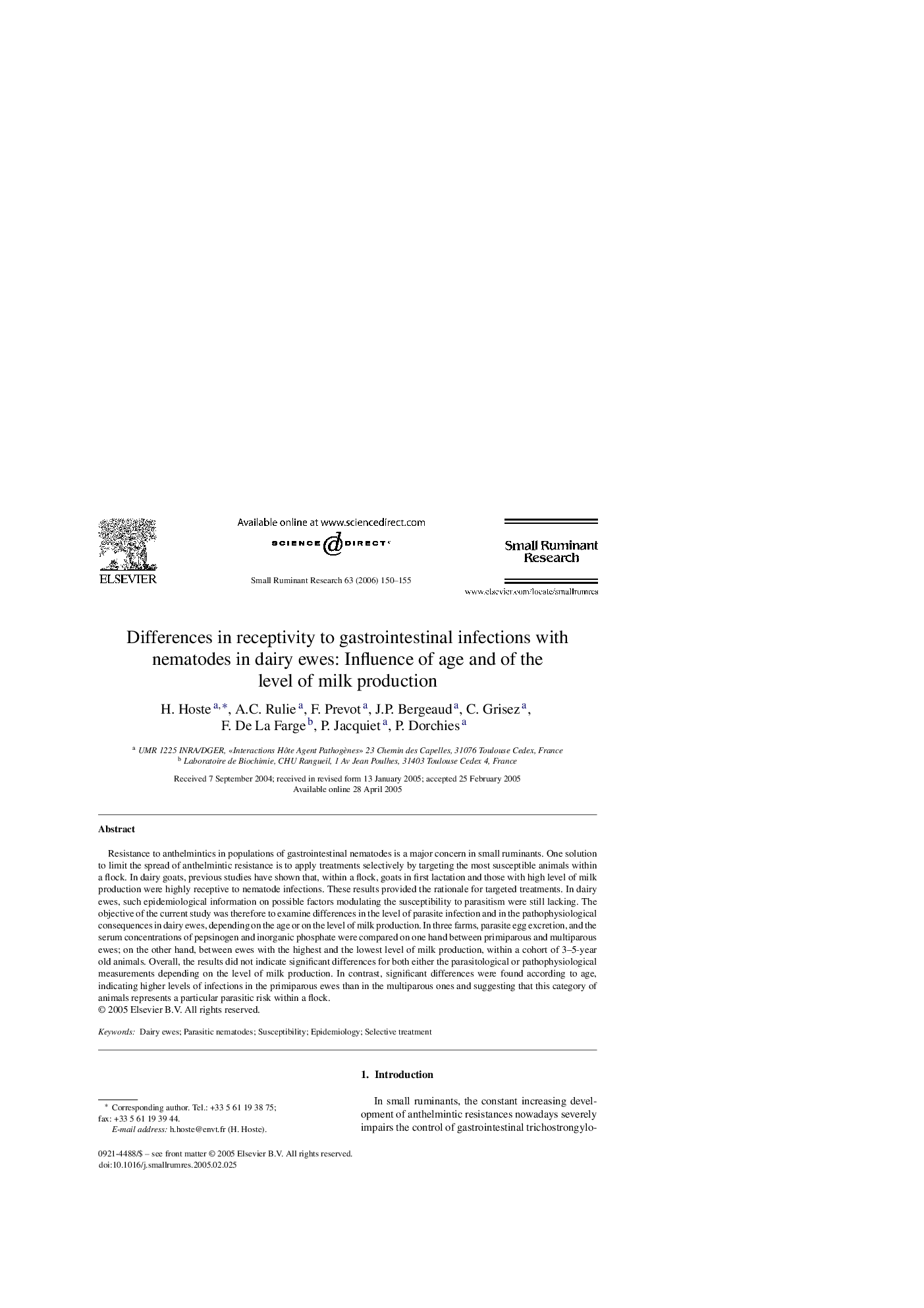| Article ID | Journal | Published Year | Pages | File Type |
|---|---|---|---|---|
| 2458397 | Small Ruminant Research | 2006 | 6 Pages |
Abstract
Resistance to anthelmintics in populations of gastrointestinal nematodes is a major concern in small ruminants. One solution to limit the spread of anthelmintic resistance is to apply treatments selectively by targeting the most susceptible animals within a flock. In dairy goats, previous studies have shown that, within a flock, goats in first lactation and those with high level of milk production were highly receptive to nematode infections. These results provided the rationale for targeted treatments. In dairy ewes, such epidemiological information on possible factors modulating the susceptibility to parasitism were still lacking. The objective of the current study was therefore to examine differences in the level of parasite infection and in the pathophysiological consequences in dairy ewes, depending on the age or on the level of milk production. In three farms, parasite egg excretion, and the serum concentrations of pepsinogen and inorganic phosphate were compared on one hand between primiparous and multiparous ewes; on the other hand, between ewes with the highest and the lowest level of milk production, within a cohort of 3-5-year old animals. Overall, the results did not indicate significant differences for both either the parasitological or pathophysiological measurements depending on the level of milk production. In contrast, significant differences were found according to age, indicating higher levels of infections in the primiparous ewes than in the multiparous ones and suggesting that this category of animals represents a particular parasitic risk within a flock.
Related Topics
Life Sciences
Agricultural and Biological Sciences
Animal Science and Zoology
Authors
H. Hoste, A.C. Rulie, F. Prevot, J.P. Bergeaud, C. Grisez, F. De La Farge, P. Jacquiet, P. Dorchies,
